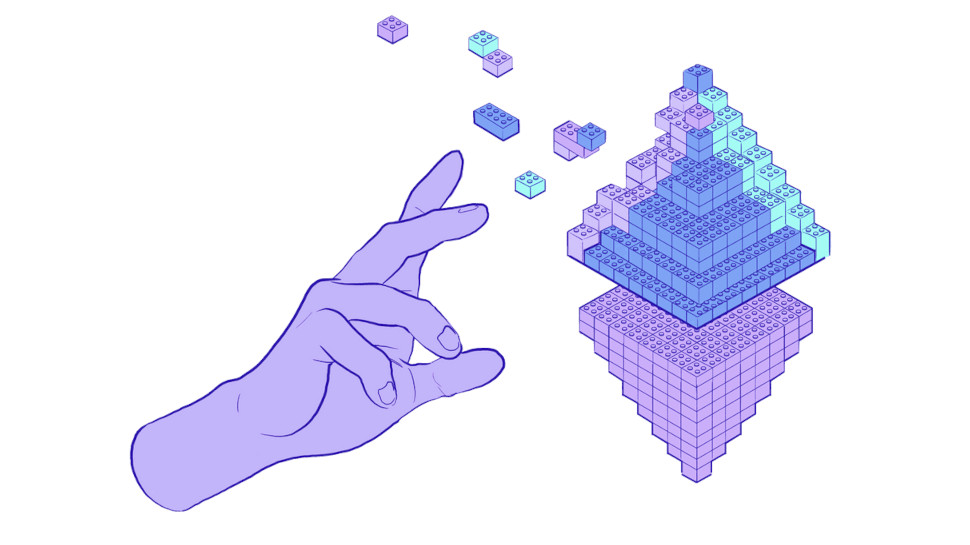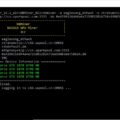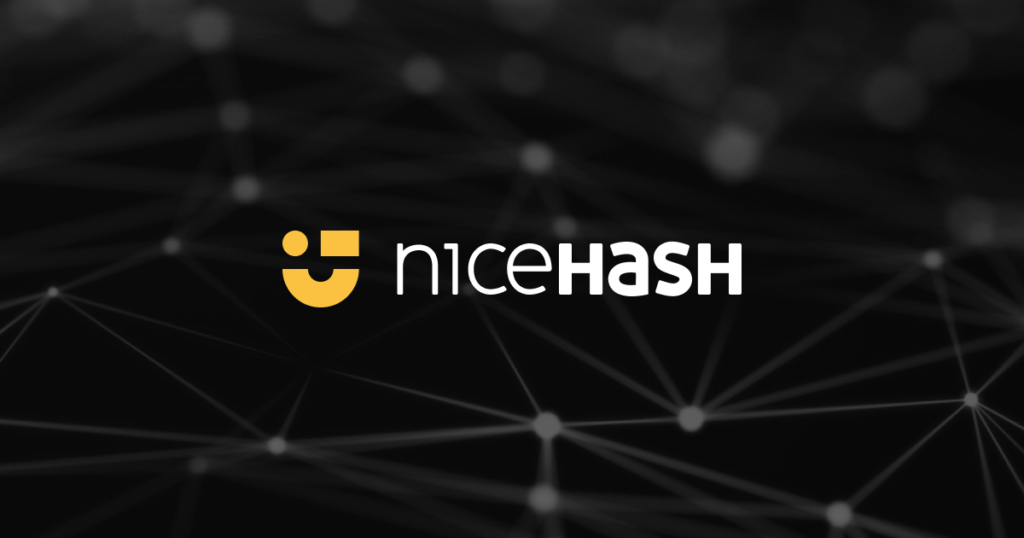
Full guide to stacking on Ethereum 2.0 and the most effective ways to stack on ETH2
It isn’t breaking news that the Ethereum blockchain is undergoing a transformational shift to Ethereum 2.0, but the colossal staking investments it has received has led to unprecedented stardom. More than of Ether has been staked on the ETH2 network at the time of writing, and there are no signs of this trend slowing down.
But what is the reason for this change and how to become part of it? What’s sparked the titanic growth in ETH2 investments? There’s a lot surrounding Ethereum’s overhaul, and although there’s a long way to go before it reaches its full potential, we should begin with the basics of Ethereum staking. From Proof of Work to Proof of Stake, why and where to stake, we’ll discuss it all below.
Ethereum Staking Basics
What was the reason for upgrading Ethereum in the first place? The issues that came with ETH1 mainly revolved around its scalability and centralisation due to the restrictive Proof of Work (PoW) model it is based on. The first-ever cryptocurrency, Bitcoin, required transactions to be verified without the need for third-party input, so Satoshi Nakamoto created this PoW system.
- From Proof of Work to Proof of Stake
Many blockchains adopted it, including the second most popular one — Ethereum, but it became increasingly clear that PoW was not sustainable. Aside from the unconscionable amount of electricity it consumes, the number of transactions it can cope with at the same time is extremely limited — 7 per second, to be precise — whilst taking the network approximately 10 minutes to confirm it. Ethereum tweaked the code to drop this to 16 seconds and allow for 15 transactions per second, but it still wasn’t enough. The fees associated became too high to make it a feasible choice for a global payment or infrastructure system, its own limitations have weakened it.
This spurred the development of alternative consensus mechanisms — and Proof of Stake (PoS), the creation of , entered the playing field back in 2012. The PoS model became the solution to many of the PoW issues, but the influence on the below was significant:
- Energy Consumption
The attempt to decode the cryptographic equation consumes a lot of electricity. In fact, a recent study has shown us that Bitcoin’s network demands more electricity than what over 159 countries use! Aside from being awful for the environment, it hits your wallet hard, and because electricity bills can only be paid in fiat money, it makes it difficult to adopt it in the real world. The electricity requirements of a Proof of Stake network are incomparable, as there is no need to solve complex sums, thus alleviating the costs for transaction verifications.
- Centralisation
With a PoW system, your average Joe isn’t doesn’t stand a chance of winning crypto mining rewards against competing for centralised conglomerates and organisations that purchase hugely powerful hardware and devices. These ‘mining pools’ offer the best chances of finding a solution to the cryptographic sums, but with just 4 of these around the world, they ascertain control of more than 50% of Bitcoin mining power. PoS, on the other hand, prevents these mining pools from collaborating for profits, and instead rewards participants for locking their ETH proportionately to the amount that is invested.
- Rewards
For the Proof of Work model, all miners are required to search for a solution to decipher a cryptographic sum. But the winner is only determined by the individual who has the most powerful (and highest quantity) of devices and hardware. If you think it seems unfair, it’s because it is, especially considering that a Proof of Stake model selects winners based on the amount they have staked. In a PoS model, participants aren’t exactly ‘mining’. Instead, they’re referred to as ‘forgers’, because there is no block reward. Proof of Stake grants mining power based on the percentage of crypto coins you hold, rather than having to sell them to foot the bill for the excessive energy requirements that PoW demands.
- Maintaining Network Security
Any individual that participates in ETH2 staking must keep the network secure by playing by the rules. If a hack or malicious transaction was attempted by a forger, their entire stake would be lost. It’s the reason that PoS works so well, and simply put, if you stake more, you earn more — but you’ll lose everything if you go against the grain of the system.
Why Stake?
Why is every crypto-enthusiast and financial institution raving about ETH2 Staking? To start with, Staking allows ETH owners to earn more Ethereum, depending on what they contribute. By locking a specific amount of 32ETH, you become a ‘validator’, granting you the opportunity to participate in the Ethereum 2.0 network. This made a world of difference for those willing to invest in long-term gains — exchanging tokens for passive income — whilst earning substantial staking rewards in return for locked ETH. Currently, the expected return on 100% staked ETH is a 7.23% APY. To get a better understanding on what your ETH investment can give you, try an . ETH2 staking changed the playing field, providing consistently positive annual yields and outperforming diverse asset classes, like bonds. As a result of this, it has gained a following from an assortment of institutions — nonprofits, private companies, pension funds — all seeking higher returns on investments within the cryptocurrency space.
We channel a share of our staking returns towards helping charity organisations like . This is a perfect example of how Ethereum staking generates income that can be used not only for investment purposes, but social good! — Jaydeep Korde, CEO at Launchnodes.
Staking Choices
Anyone — yes — anyone can take part in ETH2 staking and be involved in the decentralisation of the Ethereum 2.0 network, in return for ETH rewards. Let’s go through a few available options.
Non-Custodial
It’s logical to think that by eliminating third-party fees, someone should earn more, right? Meet the lesser-known, but most lucrative way to stake your ETH — non-custodial, independent — offered on a turnkey basis, with possible , by Launchnodes.
, set up by software engineers with a finance background in 2020, is the only non-custodial, investment-grade ETH2 staking validator and beacon node service available on the crypto market. It offers the opportunity for independent staking on Amazon’s cloud servers — AWS — ensuring continuous uptime with zero risk of missed attestations. Removing all intermediary involvement and controlling your own staking when running a validator node, allows you to harvest 100% of Ethereum APY. Yes — you read correctly — Launchnodes gives you 100% of the staking rewards (estimated to fall between 5–7% per year if the number of validator nodes increases) — making everyone a winner!
The company has already recorded a consequential rise in demand for independent validator nodes, from all corners of the world, by both private and public companies worldwide. The shift from PoW to PoS has unlocked Ethereum use cases, taking it to an entirely new level within the finance realm. Previously, participation implied technical knowledge, hardware and complicated equipment.
Staking ETH2 directly is the only way to go, especially if you, or institutional businesses plan to run multiple nodes. Launchnodes has taken Ethereum 2.0 staking to the next level. Supporting the ETH2 network, putting all the profits into your pockets, and no third-party fees, it has made it stand out as the sole non-custodial ETH2 staking service in the DeFi sphere.
Staking Pools
Purchasing a validator node requires 32ETH (the equivalent of over a tremendous !), which is a lot for one person to pledge. Staking Pools focus on gathering as many people to ‘chip in’ towards this so as to be able to run a validator node. The operating company takes its commission, which could be remarkably high, and divides the remaining rewards proportionate to initial contributions. If you take , as an example, their fees are extraordinarily high at a ! Ethereum staking pools are always custodial, and do not provide direct access to your wallet or your ETH, blending your contribution with those of other pool’s participants.
Another diversification from staking pools is the , and contrary to most other ETH staking pools, it preserves all the benefits of independent and commission-free staking, targeted at groups of people only starting their venture into ETH2 staking.
Staking ETH on your PC
Seeing as Ethereum 2.0 staking uses cloud servers, then it is possible to stake ETH from your personal PC. It’s true it’s an alternative manner in which to grab 100% of ETH2 rewards, but there are risks that should be acknowledged. The most obvious is to have to ensure that your server never misses an attestation passed on by a beacon node, which could be unpredictable in times of power cuts, software issues, computer freezes and slow internet connections.
If you expect the validator and beacon nodes to run effortlessly on your PC, then you should have the substantial technical know-how, as it is not a straightforward process. You’ll have to start by selecting an ETH2 client, such as Prysm. This was also Launchnodes’ choice of client, and as per Rajesh Sinha’s (Co-Founder at Launchnodes) explained:
‘We made a decision to run the nodes on the latest version of the as it has shown nothing but high performance and consistency during our evaluation process.’
Tokenized staking
This type of Ethereum staking is typically offered by crypto exchanges and staking pools management companies. Although the service is offered by at times very big names in the crypto sphere like Binance, tokenised staking can hardly be considered to be the best option for an institutional investor and even for individuals. In tokenized staking your ETH is exchanged for a synthetic token and similarly to basic staking pools, it is then blended with other contributors. Rewards are also distributed in synthetic token, which creates an additional risk of being volatile if not made stable. One way or another, tokenized staking is centralized and cannot be considered fit for staking volumes above 32ETH. Commissions range from 0% with , to 20% with service providers like and Rocketpool.
Virtual server staking
Often regarded as a non-custodial solution to Ethereum 2.0 staking, virtual server staking is in fact centralised but is more beneficial compared to tokenized staking. The sole benefit lies in the omittance of additional tokens. Otherwise, VSS providers set up a virtual server for your node and it is where it lives. Although the service is usually extremely straightforward, the technicalities is where VSS starts to lag behind. With no clarity on infrastructure quality, VSS providers like and BitcoinSuisse are known to offer a plethora of altcoins to stake along ETH. This means that the development teams may not have a dedicated focus towards Ethereum staking, updates of the infrastructure, technical support and flexibility. Nevertheless, VSS may serve as a sustainable solution for individuals looking to stake small amounts of ETH, thanks to quick onboarding and setup.
Expected price / Staking Behaviour
There’s no doubt about the monumental impression ETH2 staking has made, already having worked its way into our economy. The blockchain shift to Ethereum 2.0 further pushes ETH staking into the limelight — with it on track to becoming a . When Ethereum eventually makes it shift to the PoS model, all staked and locked-in ETH will be released.
Many investors will, of course, withdraw their money and take their returns, ultimately sending the % yield on an upward trend. In turn, another wave of investors will be attracted to ETH2 staking, including giant corporations, pension funds, banks and financial institutions, nonprofits and independent companies — looking for stable and positive yields. The benefits could go way beyond the crypto space and simple use cases, but mark a historical change in the world of investment.
So perhaps if you own a small business, or simply want to diversify your options, Launchnodes’ investment-grade, independent and non-custodial ETH2 staking is undoubtedly worth diving into. And if you’re a crypto-newbie, Launchnodes even offer non-technical clients with an end-to-end setup of ETH2 validator and beacon nodes!
Final Words on ETH2
It would be foolish to think that cryptocurrencies and DeFi are the ‘future’ of the financial industry, because they are already so ingrained into present-day society. Staking ETH is another field that is on a relentless incline to success, gaining monumental admiration on an international scale. Non-custodial, independent Ethereum staking seems the most booming trend, and soon, worldwide corporations and institutions will have ETH2 staking as part of their growth plan. The ETH2 staking success has Ethereum 2.0 well on its way to establishing itself as a seemingly unstoppable force.























